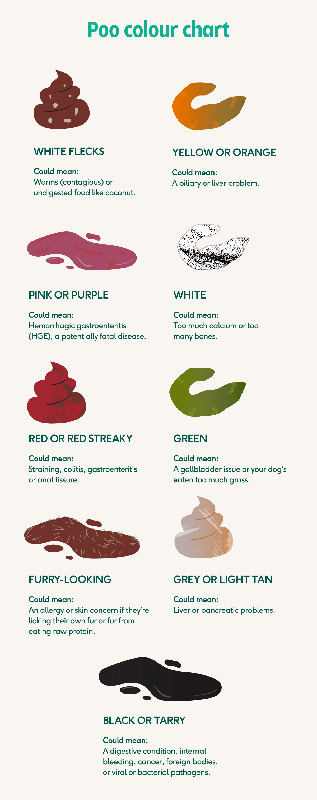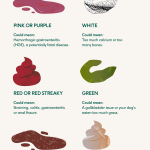As a dog owner, there’s nothing more worrisome than seeing your furry friend experience unusual symptoms. One such symptom that can send shivers down the spine is bloody mucus stool in dogs. Yes, you read it right – bloody! If your dog is producing stools with a reddish hue and slimy texture, it’s crucial to understand what’s causing this unsettling phenomenon.
Bloody Mucus Stool in Dogs: A Common Condition
Before we dive into the world of canine digestive issues, let’s set the stage. Bloody mucus stool in dogs is a relatively common condition that can occur due to various factors. It’s essential to recognize the signs and symptoms early on to prevent complications. In this blog post, we’ll delve into the causes, diagnosis, and treatment options for bloody mucus stools in dogs.
What Causes Bloody Mucus Stool in Dogs?
The most common cause of bloody mucus stool in dogs is gastrointestinal upset, which can stem from various sources. One primary culprit is inflammatory bowel disease (IBD), a chronic condition characterized by inflammation in the digestive tract. When left unchecked, IBD can lead to changes in gut flora, damage to the intestinal lining, and – you guessed it – bloody stools.
Other possible causes include food allergies or sensitivities, gastrointestinal infections, and certain medications. For instance, some antibiotics can disrupt the balance of gut bacteria, leading to an imbalance that manifests as bloody mucus stools.

As we explored earlier, bloody mucus stool in dogs can be a distressing sight for any pet owner. Now that we’ve covered the common causes of this condition, let’s dive deeper into what you should expect during your dog’s diagnosis and treatment.
Diagnosing bloody mucus stool in dogs typically involves a combination of physical examination, medical history, and diagnostic tests. Your veterinarian may ask you about your dog’s appetite, stool quality, and any recent changes or events that might be contributing to the condition.
To confirm the diagnosis, your vet may conduct one or more of the following tests:
- A complete blood count (CBC) to rule out underlying infections or inflammation
- Blood chemistry tests to assess organ function and detect any signs of gastrointestinal disease
- Fecal examination to check for parasites, such as worms or giardia
- Imaging studies like X-rays or ultrasound to visualize the digestive tract
If your dog’s bloody mucus stool is determined to be caused by inflammatory bowel disease (IBD), your vet may recommend a treatment plan that includes:
- A combination of medications to manage symptoms and reduce inflammation
- Dietary changes, such as introducing novel protein sources or switching to a hypoallergenic diet
- Supplements or probiotics to support gut health and balance the microbiome
In some cases, your vet may recommend a trial of antibiotics to treat any underlying bacterial infections. However, it’s essential to work closely with your veterinarian to determine the best course of treatment for your dog.
Treatment for bloody mucus stool in dogs typically involves a combination of diet and medication adjustments. As you work with your vet to develop a plan, here are some key things to keep in mind:
- Monitor your dog’s stool quality and appetite closely to track progress
- Adjust the treatment plan as needed based on your dog’s response
- Be patient – treating IBD or other digestive conditions can take time, and it may take some trial and error to find the right combination of treatments
By understanding what causes bloody mucus stool in dogs and working with your veterinarian to develop an effective treatment plan, you can help your furry friend feel more comfortable and manage their condition effectively.
Learn More About Digestive Issues in DogsStay tuned for our next installment, where we’ll explore the importance of a balanced diet in supporting your dog’s overall health and digestion.
Consult with a Dog Care Expert
If your furry friend is experiencing bloody mucus stool, our expert dog care specialists are here to help you understand the underlying causes and develop a personalized plan for recovery.
Start chatIn our previous discussion, we explored the phenomenon of bloody mucus stool in dogs, a condition that can be distressing for pet owners. As we’ve seen, this symptom is often linked to gastrointestinal upset, inflammatory bowel disease (IBD), food allergies or sensitivities, gastrointestinal infections, and certain medications.
Key Points Covered
To recap, here are the key takeaways:
- Bloody mucus stool in dogs is a relatively common condition that can occur due to various factors.
- Inflammatory bowel disease (IBD) is one of the primary causes of this symptom.
- Food allergies or sensitivities, gastrointestinal infections, and certain medications can also contribute to bloody mucus stools.
Final Insights
If you’ve noticed your dog producing bloody mucus stool, it’s essential to seek veterinary attention promptly. A thorough examination and diagnostic testing will help identify the underlying cause of this symptom. With proper treatment and care, most dogs with bloody mucus stools can recover fully.
A Strong Conclusion
In conclusion, bloody mucus stool in dogs is a concerning symptom that requires prompt attention. By understanding the potential causes of this condition and seeking timely veterinary care, you can help your furry friend feel better and prevent any long-term complications. Remember, as a responsible dog owner, it’s crucial to stay vigilant and address unusual symptoms early on to ensure your pet receives the best possible care.
The best food for large breed dogs: Are you wondering what to feed your furry friend? Our article reveals the top picks for a happy and healthy large breed dog, from puppyhood to old age. Discover how to keep them thriving with the right nutrition.
I just adore you asking for more: Need motivation to ask for what you want? This uplifting article shows you how to build confidence and develop a growth mindset. Learn the power of self-advocacy and start saying “yes” to your desires.


